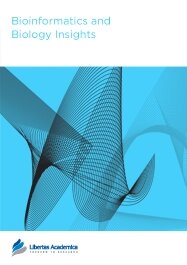

Publication Date: 11 Nov 2009
Type: Methodology
Journal: Bioinformatics and Biology Insights

The high sequence divergence within the small subunit ribosomal RNA gene (SSU rDNA) of foraminifera makes it difficult to establish the homology of individual nucleotides across taxa. Alignment-based approaches so far relied on time-consuming manual alignments and discarded up to 50% of the sequenced nucleotides prior to phylogenetic inference. Here, we investigate the potential of the multiple analysis approach to infer a molecular phylogeny of all modern planktonic foraminiferal taxa by using a matrix of 146 new and 153 previously published SSU rDNA sequences. Our multiple analysis approach is based on eleven different automated alignments, analysed separately under the maximum likelihood criterion. The high degree of congruence between the phylogenies derived from our novel approach, traditional manually homologized culled alignments and the fossil record indicates that poorly resolved nucleotide homology does not represent the most significant obstacle when exploring the phylogenetic structure of the SSU rDNA in planktonic foraminifera. We show that approaches designed to extract phylogenetically valuable signals from complete sequences show more promise to resolve the backbone of the planktonic foraminifer tree than attempts to establish strictly homologous base calls in a manual alignment.
PDF (8.69 MB PDF FORMAT)
RIS citation (ENDNOTE, REFERENCE MANAGER, PROCITE, REFWORKS)
Supplementary Files 1 (537.56 KB ZIP FORMAT)
BibTex citation (BIBDESK, LATEX)
XML
PMC HTML
The publication of our paper in Bioinformatics and Biology Insights was highly professional and very pleasant on all levels: the guidelines for authors are concise, the online submission system is user-friendly, the comments from the reviewers were insightful and improved our paper, and the preparation of the manuscript for publication was efficient. I particularly liked the fast feedback from the staff on the state of the submission and review process.

All authors are surveyed after their articles are published. Authors are asked to rate their experience in a variety of areas, and their responses help us to monitor our performance. Presented here are their responses in some key areas. No 'poor' or 'very poor' responses were received; these are represented in the 'other' category.See Our Results
Copyright © 2013 Libertas Academica Ltd (except open access articles and accompanying metadata and supplementary files.)
FacebookGoogle+Twitter
PinterestTumblrYouTube